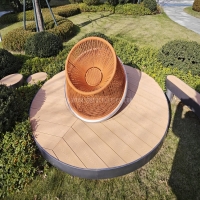Welcome to the website for landscape facilities products and knowledge.
How does the table’s design account for ease of integration with existing seating arrangements?
When selecting a new table, its ability to harmonize with your current seating is a primary design consideration. Designers achieve this seamless integration through several key principles. Firstly, dimensional compatibility is crucial. Standard table heights are calibrated to align with common chair and bench heights, ensuring comfortable legroom and a unified visual line. The table's silhouette and leg placement are also meticulously planned. Pedestal bases or strategically set legs offer greater flexibility, allowing chairs to tuck in completely without obstruction, which is essential for maximizing space in smaller areas.
Beyond pure measurements, aesthetic cohesion is paramount. Designers often create tables with neutral palettes, versatile materials, and timeless lines that act as a bridge between various chair styles. A simple, solid wood or minimalist metal table, for instance, can effortlessly unite upholstered dining chairs with a rustic bench. Furthermore, the rise of modular and extendable table designs offers unparalleled integration. These tables can be adapted in size and shape, fitting perfectly into different room layouts and accommodating an evolving collection of seating furniture. Ultimately, a well-designed table doesn't demand that you replace your existing chairs; it is engineered to complement and enhance them, creating a cohesive and functional living space.
Related search:

Recommendation
Swivel chair-Specialty steel structure woven rattan leisure chair with rotatable design